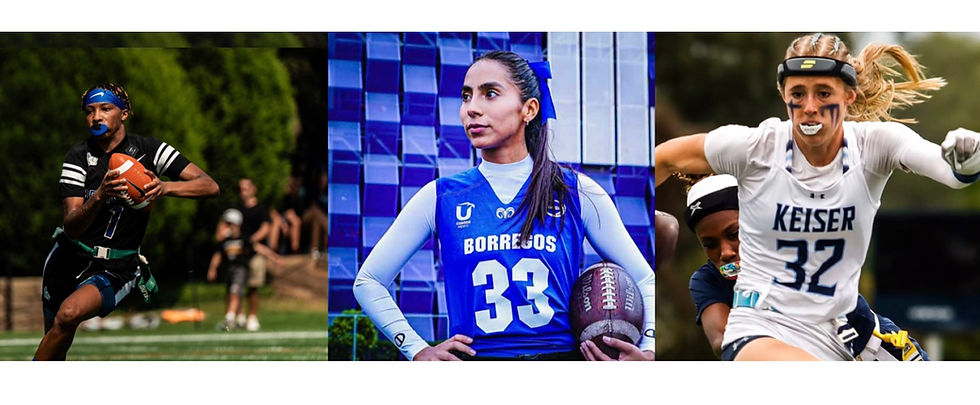More Money, More Problems: NIL and Tax Issues That May Arise
- Austin Scherer
- Jul 26, 2021
- 2 min read
Updated: Sep 2, 2022
The impending boom in wealth for college athletes benefiting from their name, image, and likeness (NIL) ushers in a newfound excitement for athletes across the country. College athletes like Hercy Miller, who will be an incoming freshman playing basketball at Tennessee State, claims to have a $2 million NIL deal. This should be celebrated as players will reap the benefits universities and conferences have monopolized to themselves. Unfortunately, for every benefit there is a cost. One cost is taxation on these profits.
Like most college students, the only time taxes were relevant to me were the times I needed a refund to spend it on “Natty Light.” Beyond that, the terms “income bracket” and “corporate tax” were simply foreign to me. College athletes that benefit from their NIL, will now have to navigate the world of taxes. Depending on the state, some athletes will be obligated to learn the essentials on taxes, others will need to start learning on their own.[1]
This is not to say that athletes are better off making $0 than earning an income for their NIL, but there are some additional costs that may factor in. NIL compensation could affect financial aid and Pell Grant eligibility. In addition, the work would be considered independent contract work. The reason this qualifies as independent contract work is since endorsement deals typically do not constitute full-time work but rather specific and “episodic obligations.” However, depending on the state, it has become more difficult for employers to classify their workers as independent contractors. Independent contractors do not see their company withhold income taxes, Social Security, and Medicare; the way employees typically do.
Finally, some college programs may benefit depending on the state they live in as state taxes may be more lenient than other states. States like Florida, Nevada, Texas, or Washington may enjoy an advantage due to their tax laws. This would not be seen for a small-scale athlete, but take, for example, Hercy Miller. If Miller were to receive a $100,000 endorsement deal in California, he would owe, $32,820 in taxes, however in Florida, he would only pay $27,600. This may not seem like much, but for college athletes ready to profit on their NIL, every dollar counts. It should be reminded that not every college athlete is treated equally, and while some may go pro, others will need to find a second option for a career. Every dollar counts, but we are just on the cusp of learning the lay of the land when it comes to NIL and taxes.
Austin is a Rising third year law student, Washington College of Law, Am. U.; M.S., Finance, Am. U.; B.A., Geo. Wash. Univ.
[1] Michael McCann, Texas Joins NIL Fray With College Athlete Pay Law Effective July 1, SPORTICO, https://www.sportico.com/law/analysis/2021/texas-nil-law-1234631994/, Jun. 15, 2021 (last visited Jul. 23, 2021).







Making money from NIL is a big step forward for student athletes, but Agario without a good understanding of taxes, “a lot of money” can easily turn into “a lot of trouble”!
Earning more money often requires a mix of strategy, skill, and the right opportunities. Many people explore side hustles, invest in personal development, or leverage passive income streams such as online businesses, real estate, or the stock market. There’s also the chance of tapping into new markets or pursuing higher-paying job opportunities. If you’re looking to increase your earnings, keeping an eye on emerging trends might open unexpected possibilities. As we move forward, new avenues could arise in 2025, and some may align with my str 2025, giving a potential boost to your financial goals.
EPS Machine EPS Cutting…
EPS Machine Eps Raw…
EPS Machine EPS Recycling…
EPS Machine EPS Mould;
EPS Machine EPS Block…
EPP Machine EPP Shape…
EPTU Machine ETPU Moulding…
EPS Machine Aging Silo…
EPTU Machine ETPU Moulding…
EPS Machine EPS and…
EPS Machine EPS and…
AEON MINING AEON MINING
AEON MINING AEON MINING
KSD Miner KSD Miner
KSD Miner KSD Miner
BCH Miner BCH Miner
BCH Miner BCH Miner
EPS Machine EPS Cutting…
EPS Machine Eps Raw…
EPS Machine EPS Recycling…
EPS Machine EPS Mould;
EPS Machine EPS Block…
EPP Machine EPP Shape…
EPTU Machine ETPU Moulding…
EPS Machine Aging Silo…
EPTU Machine ETPU Moulding…
EPS Machine EPS and…
EPS Machine EPS and…
AEON MINING AEON MINING
AEON MINING AEON MINING
KSD Miner KSD Miner
KSD Miner KSD Miner
BCH Miner BCH Miner
BCH Miner BCH Miner